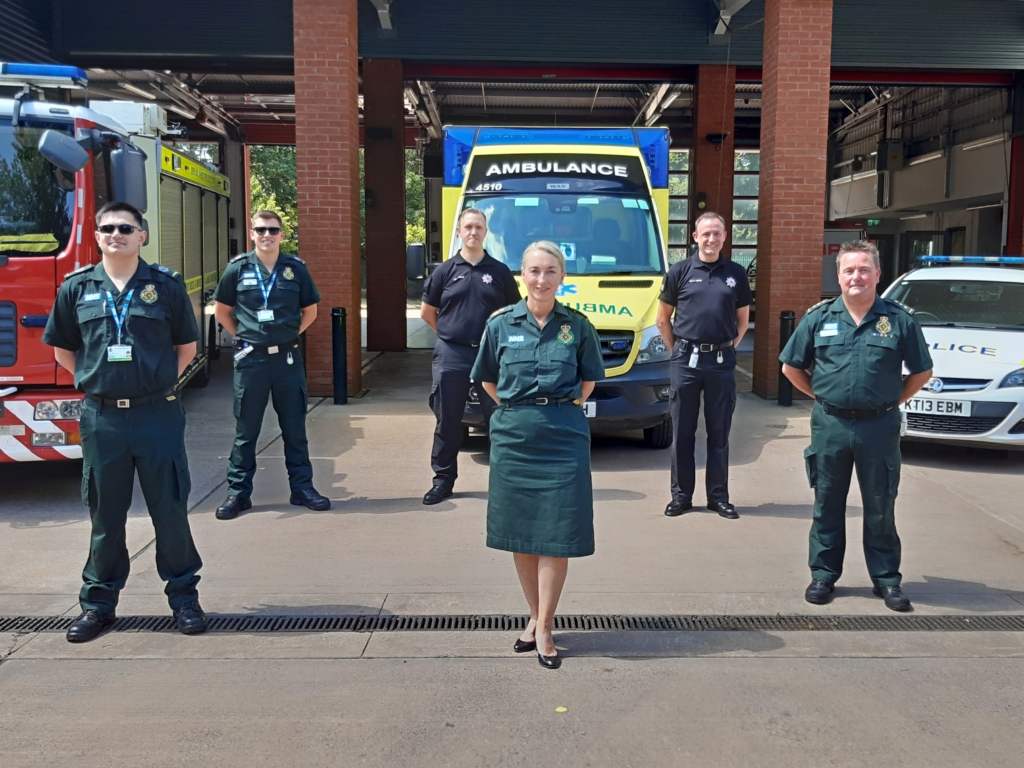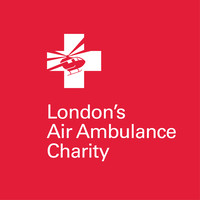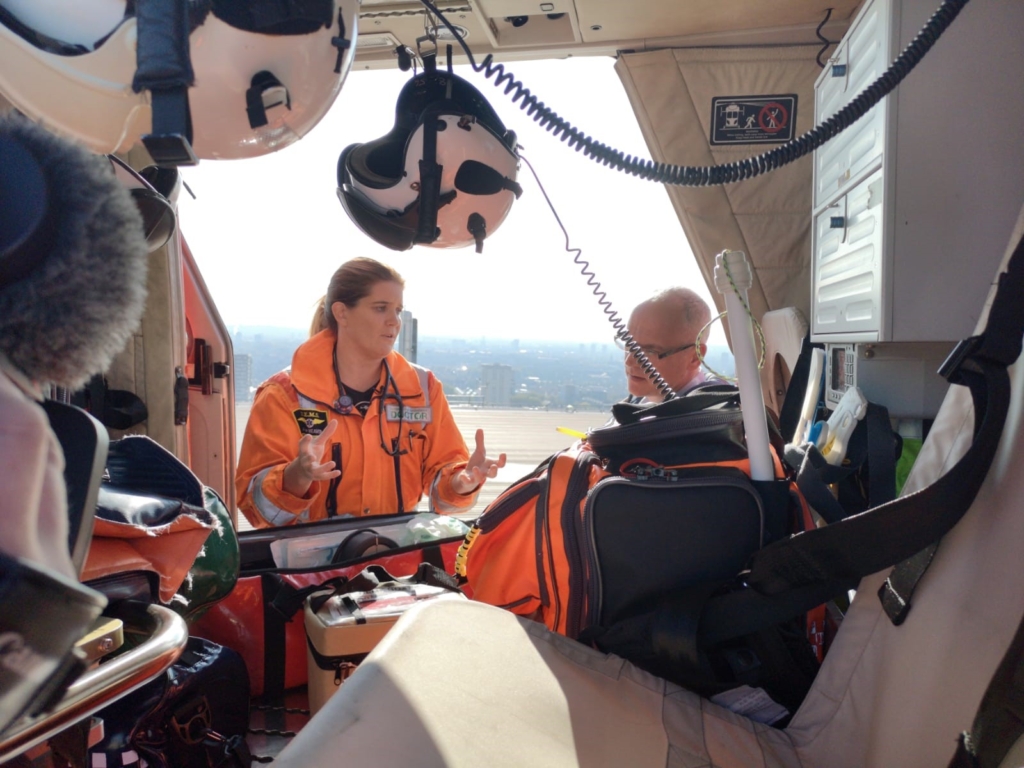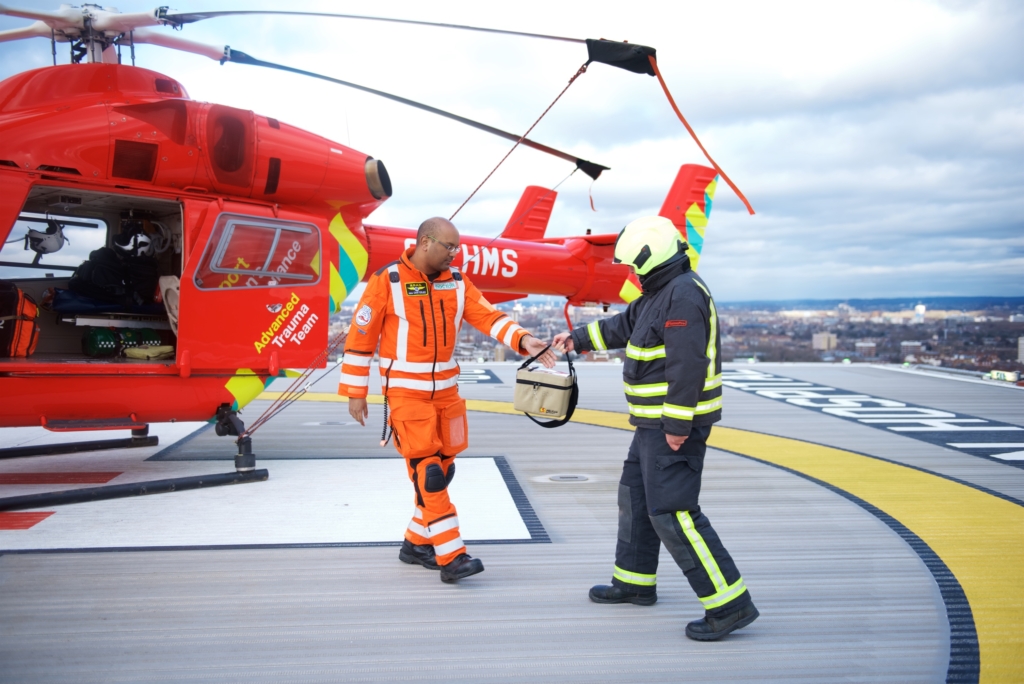The Prince of Wales Meets Emergency Services Staff
https://chat.whatsapp.com/AmbulanceTodayDirect
The Prince of Wales has met representatives from South Western Ambulance Service NHS Foundation Trust (SWASFT), Devon and Somerset Fire and Rescue Service (DSFRS), and Devon and Cornwall Police.
His Royal Highness (HRH) visited Exeter Middlemoor Fire Station on Wednesday 22 July to express his support and thanks for the work undertaken by the three services so far in response to Covid-19.
He heard first-hand from various personnel about the pressures on the services, and how they have adapted with dedication and professionalism to meet the challenges.

SWASFT has worked in close partnership with the region’s fire services during the pandemic, with firefighters supporting ambulance crews by driving vehicles and working alongside clinicians to provide care and assistance to patients.
Jessica Cunningham, Executive Director of Operations at SWASFT, said: “We are delighted that HRH has been able to hear first-hand about the invaluable amazing contribution of our fire service partners across the region in our response to Covid-19.
“We were able to stand this project up extremely quickly, which was really important because nobody knew in March exactly what the impact of Covid-19 would be on the population of the South West.
“We are extremely grateful for the level of collaboration with all the region’s fire services, which has truly benefitted our service to patients.
“We are discussing with the fire chiefs how we will continue to work together, as this partnership has been a really positive experience for both services.”

In March SWASFT formally requested the five South West fire and rescue services to provide ambulance drivers as part of its Covid-19 response.
SWASFT invested in a fleet of 15 additional ambulances, which would be driven by volunteer firefighters across the South West 24/7.
Initially they attended lower priority calls with Emergency Care Assistants (ECAs), but since the end of June have worked alongside paramedics to respond to all categories of emergency.
So far the volunteers have attended a total of more than 4,500 incidents.
Derek McCullough, an officer with SWASFT who has co-ordinated the partnership, said: “The volunteers are genuinely saving lives.’
“There have been cases where they have assisted with CPR and have revived various people. They have also been involved in challenging hospital transfers in the South West and beyond for patients with severe burns and life-threatening brain injuries. One crew also helped to deliver a baby girl called Elsie.”
Mark Evans, an on-call firefighter, is leaving his job as a supermarket manager to join SWASFT as an ECA after helping to deliver baby Elsie.
He said: “When I was at school I wanted to be either a footballer or a paramedic. I’ve really enjoyed partnering with SWAST during the pandemic, and everyone has made me feel part of the team. I’m starting-off as an ECA and eventually aim to become a paramedic.”
HRH also met Newly Qualified Paramedic Conor Calby, Paramedic Kye Brooks, and Rob Partridge, on-call fire crew manager and volunteer ambulance driver.
Quality content
- Casinos Not On Gamstop
- Casinos Not On Gamstop
- Casino Sites Not On Gamstop
- Non Gamstop Casino
- UK Online Casinos Not On Gamstop
- Casino Sites Not On Gamstop UK
- Casino Sites Not On Gamstop
- Games Not On Gamstop
- Sites Not On Gamstop
- UK Online Casinos Not On Gamstop
- Casino Not On Gamstop
- Slots Not On Gamstop
- Casino Not On Gamstop
- Gambling Not On Gamstop
- Casinos Not On Gamstop
- Non Gamstop Casino
- UK Online Casinos Not On Gamstop
- Casino Sites Not On Gamstop
- Best Betting Sites
- Best UK Online Casinos
- New Horse Racing Betting Sites




























